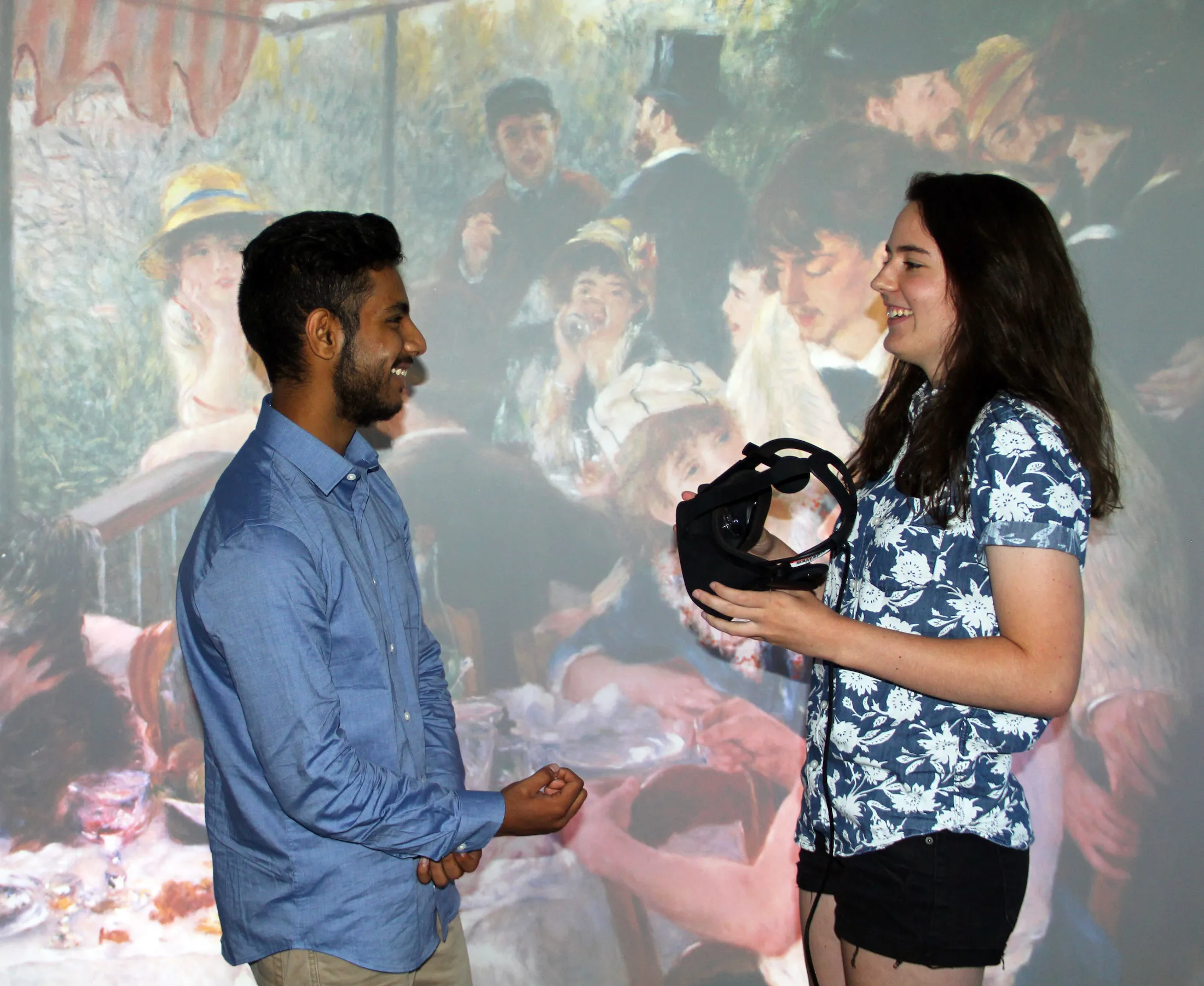
While the UMIACS Augmentarium is normally bustling with activity related to immersive technologies for emergency medicine, language acquisition, and law enforcement training, a fine arts flavor has taken over the innovative lab space on the UMD campus this summer.
Seven Maryland undergraduates are brainstorming how to enhance art museum experiences using augmented reality (AR), virtual reality (VR) and beacon technologies in the lab. They are using their knowledge of computer science to transform how visitors to The Phillips Collection in Washington, D.C., experience timeless art by Renoir, Georgia O’Keefe, Edward Hopper, and others.
The now-sophomores were selected to do summer research from their First Year Innovation & Research Experience (FIRE) program, in which they studied new visualization technologies for two semesters with Research Educator Kyungjin Yoo.
Now they’re implementing their studies into the practical setting of The Phillips Collection, which the university has an ongoing partnership with.
“My goal is for the students to see how their academic goals can be set up practically in the Phillips museum,” says Yoo, who is advising the students as part of the FIRE Summer Fellows Program.
The students are passionately researching a handful of potential web and mobile applications that the museum could utilize.
Computer science major Julia Hayes is researching ways to integrate 360-video into a museum environment—like streaming events in 360-form on the museum website, for example.
Hayes is thrilled to spend her summer researching virtual reality for an art museum because she hopes to make a career out of both art and computer science.
“This is literally what I wanted to do when I went into computer science,” she says.
Taru Rustagi and Andrew Figlarz are collaborating on an indoor GPS that would direct visitors to a specific piece of artwork. The camera on a visitor’s phone would capture where they are in the museum, and beacon technology would guide them to the painting.
This system would be especially beneficial to The Phillips Collection because it is not laid out like a typical museum. The museum originated in a 19th century Georgian Revival house that has expanded into the surrounding buildings over the years.
“The Phillips Collection has a unique curation and a complicated structure. They need some good guides for the audience to fully appreciate the museum,” Yoo says.
To develop their system, Figlarz is testing the strength of the beacons in the hallways around the Augmentarium with a floorplan on his phone. He will later duplicate that process at The Phillips Collection.
A computer science and criminal justice double major, Figlarz plans to specialize in cybersecurity. But he sees his summer research as “very valuable work that will only help me with my skills.”
Elijah Schwelling is researching how to generate 3-D models of artwork from a 2-D image. Theoretically, museum visitors could take photos of artwork with their phones and Schwelling’s app would make the image 3-D.
Yoo’s other student researchers are designing an app that would provide visitors with additional information on a painting, like when it was added to the collection, and suggest related artwork.
The students have visited The Phillips Collection a few times already, yet additional trips are planned to meet with art historians and curators who will provide them with resources to further their research.
“We are excited by the wealth new ideas that come from these talented students,” says Barbara Brawn-Cinani, the associate director of the Maryland Blended Reality Center, which oversees the research and educational activities in the Augmentarium. “While the core mission of the Augmentarium is high-impact research, we consider the arts and humanities impactful as well. So we’re very happy to share our lab space and hardware with young researchers exploring that area of AR and VR.”
—Story by Maria Herd